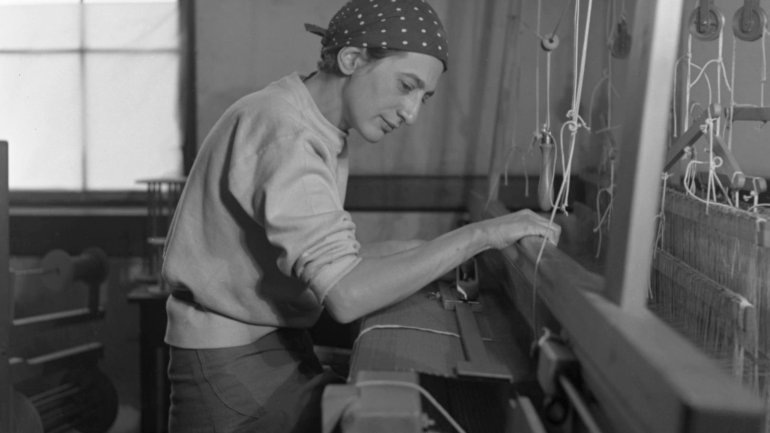Review: Anni Albers On Weaving, Expanded Edition
Few craft books have had as inauspicious a start as On Weaving, by Anni Albers. When she was offered the opportunity to write an essay on handweaving for the Encyclopedia Britannica in 1963, Albers (1899 – 1994) was well-established globally as an innovative weaver who had transformed the ancient craft into modern textile art. That commission planted the seed for her book, which was published in 1965, but its arrival disappointed many craft-minded readers, who were frustrated that only a handful of weavings were illustrated in color. Over one hundred weavings, examples of masterworks ranging from the ancient Peruvian to Albers’ own, were reproduced in dull monochrome.
A new expanded edition, released earlier this month by Princeton University Press, replaces the earlier version’s 112 black-and-white plates with radiant color weaving reproductions. That alone is a reason to rejoice. The afterword by Nicholas Fox Weber, a writer and essayist who runs the Josef and Anni Albers Foundation, is another illuminating addition. And if craft is a means of exploring the world for you, this travel guide beckons.
Even with its photographic shortcomings, the original On Weaving found an appreciative audience not only among crafters, but also among lovers of modernism. Albers began her artistic journey by enrolling in the Bauhaus as a painter, but she was pressured by administrators to focus on the more “womanly” activity of weaving. The book offers Albers’ memory of moving past the initial frustration:
In my case it was the threads that caught me really against my will. To work with threads seemed sissy to me. I wanted something to be conquered. But circumstances held me to threads and they won me over. I learned to listen to them and to speak their language. I learned the process of handling them.
This excerpt is marked by recollection, but the book is much more than just an artist’s memoir. On Weaving presents a taste of an artful retelling of a life, but it also reads on occasion like an encyclopedia article – appropriately, given its origins – and serves as a tribute to the ancient Peruvian weaving tradition that most inspired Albers. In all, On Weaving presents Albers as a daredevil artist, experimenter, and educator, often in tandem with her renowned husband Josef, himself a painter and educator. The preface makes clear that Albers considered her life to be first and foremost a creative provocation, a meandering adventure interlacing warp and weft, hands and mind. Albers writes, “Though I am dealing in this book with long-established facts and processes, still, in exploring them, I feel on new ground…Thus tangential subjects come into view. The thoughts, however, can, I believe, be traced back to the event of a thread.”
The fact that Albers frames a thread as a happening, a process-initiator instead of solely material, signals that this 52-year-old book is as fresh and vital as ever. It reminds us that craft materials matter as more than raw objects. From Albers’ perspective, materials are alive and on the move, speaking to us, demanding attention. Threads can take us anywhere.
